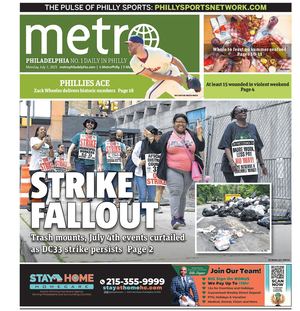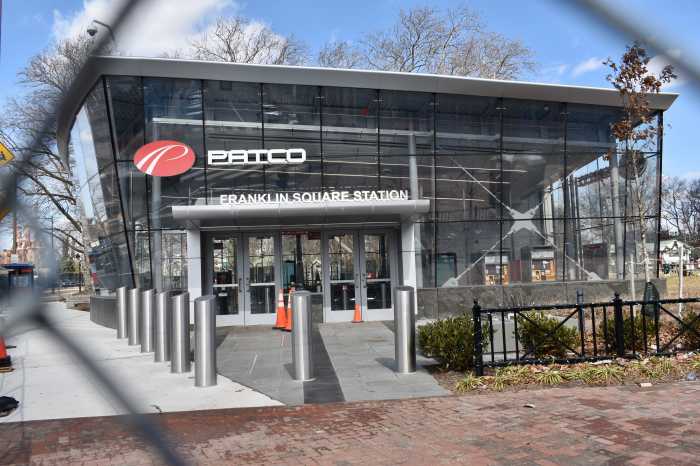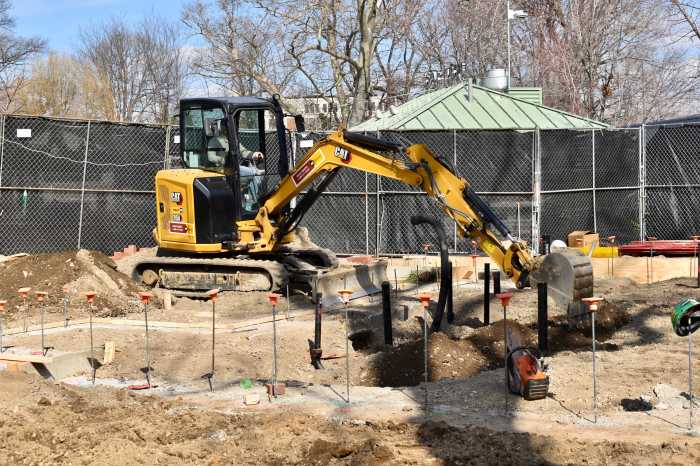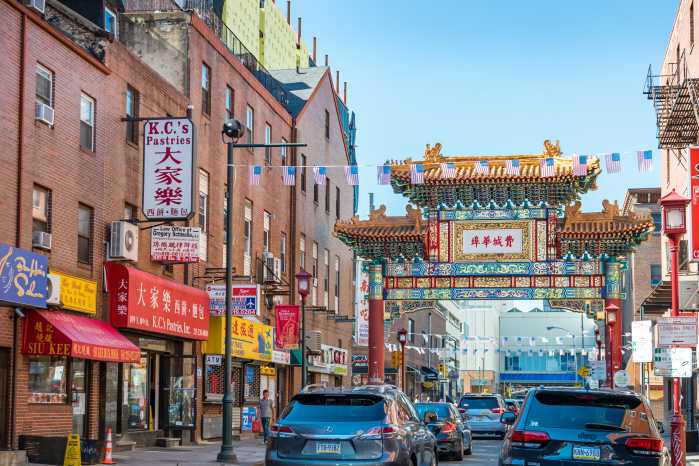Mayor Jim Kenney’s administration is studying the possibility of capping a section of the Vine Street Expressway in Chinatown, advancing a longstanding plan to lessen the highway’s impact on the neighborhood.
The cap would cover a portion of the expressway, likely extending for a block or more. Its surface could serve as green space or a site for housing or commercial development, said Christopher Puchalsky, of the city’s Office of Transportation, Infrastructure and Sustainability.
“The goals of that study are to determine how and where a cap can meet community needs,” he said Wednesday morning during a news conference. “We are starting the public engagement portion of the study today.”
Officials hope to break ground in 2028, and the project – a joint effort of the city and the Philadelphia Chinatown Development Corporation – is being buoyed by a pre-construction grant funded through the Bipartisan Infrastructure Law.
Vine Street was widened more than 70 years ago to prepare for the eventual expressway, also known as I-676. When the plan was initially unveiled, in the 1960s, it drew strong opposition from Chinatown residents. A modified version of the highway, which still splits the neighborhood, was completed in 1991.
“For decades, we’ve lived with this, but now there’s a glimmer of hope,” PCDC Executive Director John Chin said, “that all the work and planning that we’ve done for Chinatown in the last 20 years, that there’s some light at the end of the tunnel.”
Installing a cap over the expressway was first proposed as far back as 2004, and a 2017 Chinatown neighborhood plan suggested covering the area between 10th and 11th streets.
“This community never gave up the fight to come up with ways to mitigate the expressway,” Chin added.
Last month, the I-676 cap project was one of 45 initiatives to receive funding through the Reconnecting Communities Pilot Program, a Biden administration initiative to aid neighborhoods – mostly low-income and minority communities – negatively affected by highways and other infrastructure.
The $1.8 million grant is being added to $2.2 million in state, local and philanthropic funding.
For now, planners are using $400,000 from the city to begin the study and public engagement process, Puchalsky said. A website went live Wednesday, along with a survey, and a community meeting is scheduled for April 26, though a location has not been determined.
Once the federal dollars arrive, likely by the end of the year or in early 2024, the city and PCDC will contract for engineering, design and other services, according to Puchalsky.
Then, they will need to raise money for construction. The total cost is unknown, but Puchalsky estimated it would take $25 to $30 million to cover one block of I-676. Officials hope to again tap into the RCP Program for additional funding.
“We’re really focused on completing the job,” Puchalsky said. “We’re really focused on not just having this be planning work for planning’s sake, but to get to construction.”
The Vine Street Expressway is not the only highway slated to be capped. In late February, preliminary work began to reconstruct and expand the cap above I-95 at Penn’s Landing. Once complete, the site will be home to an 11.5-acre park and other amenities.






























